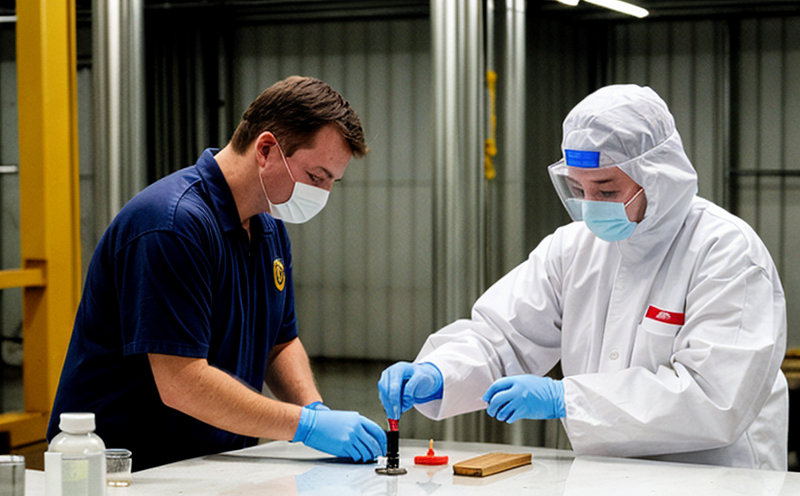ISTA 3F Temperature Conditioning for Small Parcels
The International Safe Transit Association (ISTA) is a global organization dedicated to enhancing transportation safety and reliability. Its suite of tests, including ISTA 3F, has become an industry standard for ensuring the safe transit of small parcels across various environments. The primary focus of ISTA 3F is the conditioning of packages in extreme temperature conditions before subjecting them to further testing per other ISTA procedures.
This service involves placing small parcels into a controlled environment where they are subjected to rapid and severe changes in temperature, simulating real-world transportation conditions. The test aims to evaluate how well packaging withstands these environmental stresses without compromising the integrity of the contents. This is crucial for ensuring that products reach their destination in optimal condition.
The process typically begins with carefully preparing the specimens by packing them into containers representative of typical shipping configurations. Once prepared, the parcels are exposed to a series of temperature cycles designed to replicate harsh environmental conditions encountered during transit. After conditioning, the packages undergo further testing according to additional ISTA standards to assess their overall performance.
The rapid cycling between extreme temperatures can simulate various real-world scenarios such as being left in a hot vehicle or cold storage facilities. By subjecting parcels to these conditions early on, manufacturers and transport companies can identify potential weaknesses in their packaging before committing significant resources to more comprehensive testing later down the line.
ISTA 3F is particularly important for industries that rely heavily on efficient supply chains, including electronics manufacturing, pharmaceuticals, and perishable goods. Ensuring proper protection during transit helps maintain product quality, comply with regulatory requirements, and build customer trust in brand reliability.
The test parameters are meticulously defined by ISTA to ensure consistent results across different facilities worldwide. Compliance with these standards ensures that the packaging meets international safety guidelines set forth by organizations like ISO and ASTM. Understanding this context is essential for stakeholders who need to adhere strictly to industry best practices when designing or selecting packaging solutions.
By incorporating ISTA 3F into your quality assurance process, you demonstrate a commitment to excellence in product protection during shipment. This not only enhances customer satisfaction but also contributes positively towards achieving business goals related to operational efficiency and cost management.
Why It Matters
The importance of ISTA 3F cannot be overstated, especially for companies involved in international trade or those operating within highly regulated sectors. Effective temperature conditioning plays a critical role in safeguarding valuable cargo from damage caused by fluctuating temperatures throughout its journey.
- Reduces Damage Risks: By simulating harsh environmental conditions early in the testing process, potential issues can be identified and addressed before proceeding with more rigorous evaluations. This proactive approach minimizes costly repairs or replacements upon arrival at destination points.
- Enhances Compliance: Adhering to international standards like ISTA ensures that your packaging meets regulatory expectations set by authorities such as the Food and Drug Administration (FDA) or European Medicines Agency (EMA). Meeting these requirements enhances trustworthiness among customers while reducing legal risks associated with non-compliance.
- Improves Customer Satisfaction: Protecting products during transit through robust packaging is key to maintaining brand reputation. Satisfied clients are more likely to repurchase from you and recommend your services to others, fostering long-term relationships based on reliability and trustworthiness.
In summary, ISTA 3F represents a vital component of any comprehensive quality assurance strategy aimed at delivering safe and effective logistics solutions across diverse industries. Its emphasis on realistic environmental stressors helps businesses optimize their operations by identifying problematic areas early in the development cycle.
Quality and Reliability Assurance
The process of ISTA 3F is designed to ensure that small parcels are conditioned under controlled temperature conditions before being subjected to further testing. The following list highlights some key aspects involved:
- Temperature Cycling: Specimens undergo repeated cycles between specified high and low temperatures, mimicking the types of environmental stresses encountered during transit.
- Humidity Control: Depending on specific requirements, humidity levels are also adjusted within certain limits to simulate different climatic conditions.
- Data Collection: Throughout each cycle, various parameters such as temperature changes and duration are meticulously recorded for analysis purposes.
- Post-Treatment Inspection: After completing the conditioning phase, packages undergo visual inspections along with other checks to identify any signs of damage or deterioration.
These stringent procedures help guarantee that only fully prepared parcels move on to subsequent stages of testing. This not only improves overall product quality but also streamlines supply chain management by providing valuable insights into which areas may require improvement.
International Acceptance and Recognition
The ISTA 3F test is widely recognized across numerous countries worldwide due to its stringent standards and proven effectiveness in enhancing packaging resilience. Many industries have adopted this method as part of their standard operating procedures because it aligns closely with internationally accepted practices established by organizations such as ISO, ASTM, EN, IEC, among others.
For example, pharmaceutical companies often use ISTA 3F when developing new drug delivery systems or optimizing existing ones. By ensuring that packaging can withstand extreme temperature fluctuations without compromising the integrity of the medication, they not only meet regulatory standards but also contribute to public health by preventing potentially life-threatening situations arising from improper storage conditions.
Similarly, electronics manufacturers frequently apply ISTA 3F during product design stages. This early involvement allows them to identify any flaws in circuit boards or other components that could be exacerbated by temperature extremes encountered during shipment. Such knowledge enables engineers to make necessary adjustments to improve durability and reliability throughout the entire lifecycle of the device.
The widespread acceptance of ISTA 3F underscores its significance within global supply chains where seamless integration between different geographical regions is crucial for maintaining consistent standards. Companies that invest in this service demonstrate their dedication to maintaining high levels of quality assurance, which ultimately translates into enhanced customer satisfaction and competitive advantage on an international scale.





